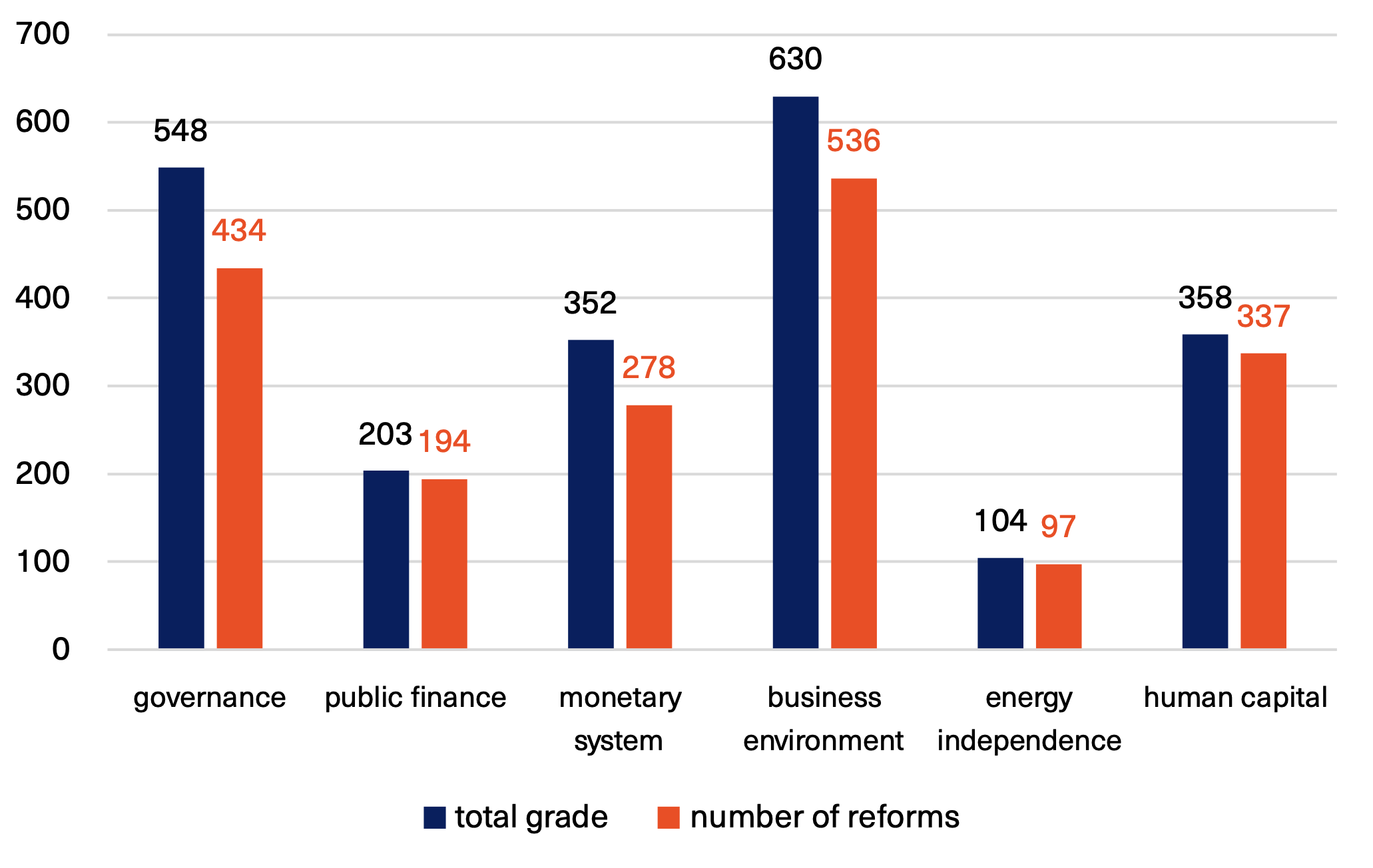After the victory of the Revolution of Dignity, the Ukrainian society and government mobilized to defend the country from Russian aggression. A key element of this response was to implement reforms that were needed to make the government more efficient and thus the country more resilient. These efforts were largely supported by international organizations and foreign partners of Ukraine.
Some reforms in Ukraine were inspired by examples of Georgia, Poland, Romania or other countries in the region. Some came from textbooks (it turned out that economic laws in Ukraine work in the same way as elsewhere), others were unique and set an example for other countries. Some were popular, others were met with resistance. Nevertheless, the majority of reforms moved Ukraine into the right direction. As a result, Ukraine is definitely stronger today than it was in 2014, when Russia attacked for the first time.
Since early 2015, VoxUkraine has been following the legislative changes, which are necessary but not sufficient conditions for implementation of reforms. Our experts evaluate changes of the “rules of the game” from the perspective of whether they have the potential to make Ukraine more democratic, free, and resilient, whether they establish the level playing field or distort the markets. This book is based on ten years of Index data that include more than 1,700 legislative acts. Based on this data, we can draw several conclusions that can provide guidance for future reforms in Ukraine or other countries.
First, political will is the key prerequisite for genuine reforms. It is more important than any external or internal pressures. Nevertheless, with sufficient effort from the civil society and support of international partners, even the toughest reforms, which the government may consider very unpopular, can happen.
Second, reforms rarely are successful from the start. For one thing, the government often tries to implement only formal changes, without changing the substance. For another, practice may be very different from theoretical ideas underlying the reform design. Therefore, it is important to have feedback mechanisms in place and adjust legislation and institutions accordingly (of course, discussing possible pitfalls before adopting a legislation would be even better but so far it is not a usual practice in Ukraine).
Third, as our surveys show, the unpopularity of reforms is often exaggerated. Or, rather, vested interests that would lose from reforms frame their position as “people’s voice.” Therefore, proper communication of reforms, especially those that affect everyday lives of people, is important. This book is a part of this communication: it shows how reforms implemented since 2014 made Ukraine more resilient and allowed it to withstand the full-scale war.
Fourth, governments may occasionally try to sabotage reforms or to reverse the progress. Thus, it is important to not only promote further changes but also to keep an eye on already implemented reforms so that they are not rolled back.
Finally, despite Ukraine’s considerable progress, the country still has much to do, especially in view of the EU accession process. To accelerate the reforms, Ukraine requires a competent and virtuous public service, as well as intellectual support of its partners. But first of all, it requires military support to defeat the Russian aggressor and establish enduring peace.
Figure I.1. Cumulative reform grades by sphere, 2015-2024
Source: Reform Index data
Figure I.2. Number of reform events and their total grade by sphere, 2015-2024

Source: Reform Index data
Each Chapter of this book is structured as follows. After a brief introduction, we provide a figure with individual events (i.e. reformist legislative acts) and cumulative reform progress for a certain sphere. Then we describe reforms in 2014-2019 (Poroshenko government) and 2019-2024 (Zelenskyy government), and provide a path forward. Our readers may notice that we have six main reform areas (Figures I.1 and I.2) and 16 Chapters in the book. This is because in the book we provide a more granular account of reforms. Some events are related to more than one area, for example, public procurement reform both saved public money and reduced corruption. We discuss each reform in just one area, for which, in our view, it has higher relevance.
Read the White Book of Reforms 2025 and previous White Books (2017, 2018, 2019) via this link.
Attention
The authors do not work for, consult to, own shares in or receive funding from any company or organization that would benefit from this article, and have no relevant affiliations



